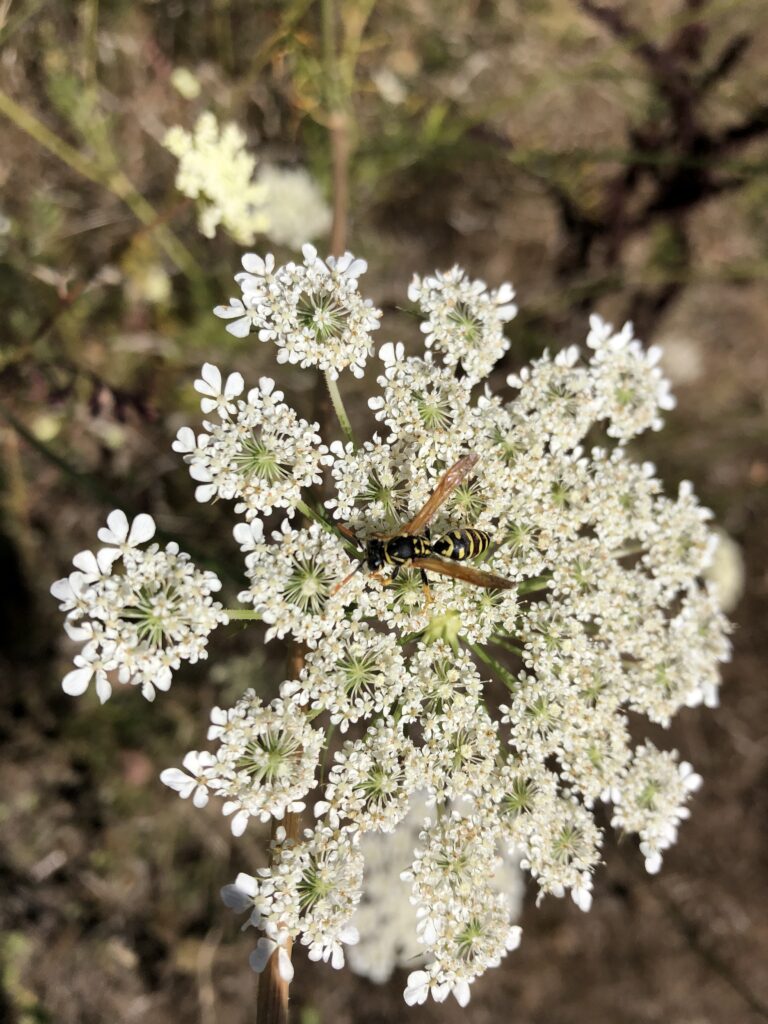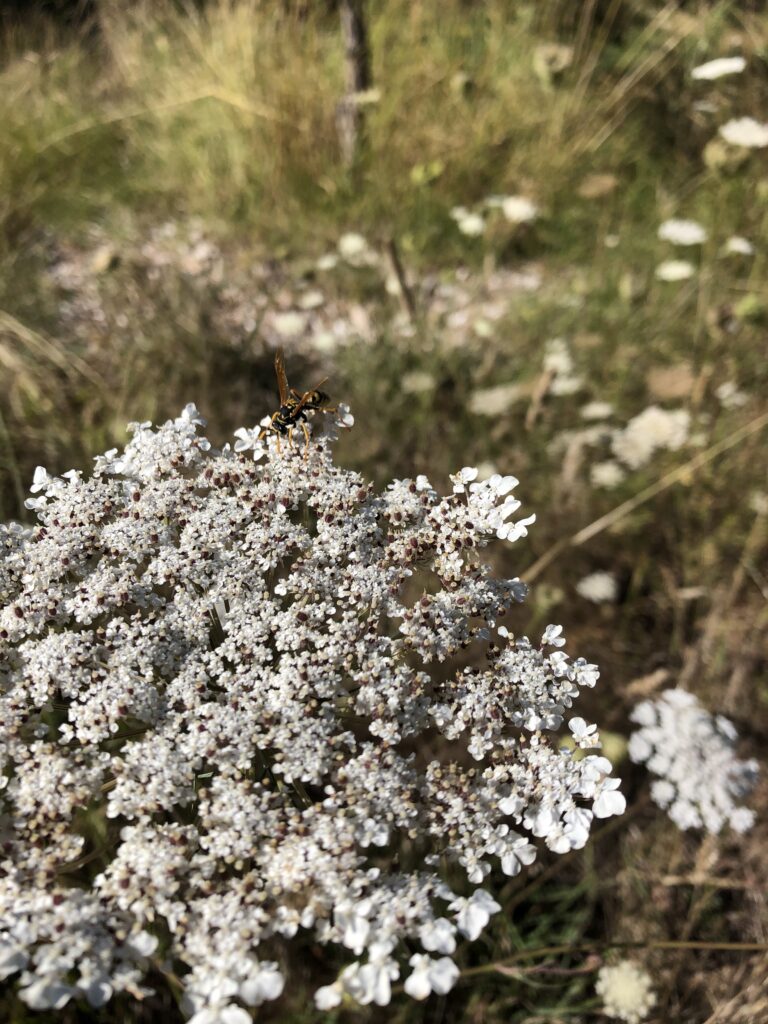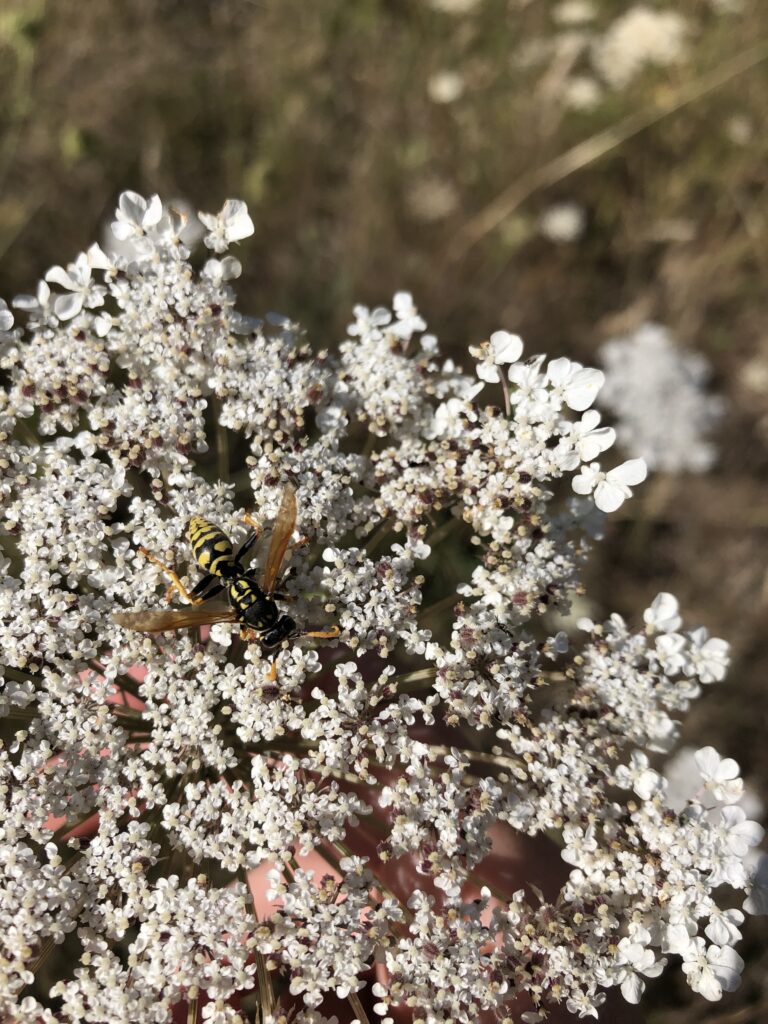European Paper Wasp (Polistes dominula)

The European paper wasp is an invasive species that was introduced to Canada from Europe. These wasps have a black head and thorax with small yellow markings, and a yellow and black abdomen. They also have yellow legs, and orange-tipped antennae.

European paper wasps are omnivores; they will eat insects, fruit, or nectar from flowers. They also build their nests from a paper-like material, which they make by chewing wood fibres into a pulp. Paper wasps live in colonies, and have a very distinct social hierarchy. Each colony has one queen, who is the only female wasp that lays eggs. The other females in the colony are called workers, and they are responsible for foraging, cleaning the nest, and caring for the eggs. The main role of male wasps is to mate with the queens. Except for the queens, most wasps do not survive through the winter, so the queens start new colonies each spring.

European paper wasps are pollinators, but they are considered to be invasive because they are outcompeting native paper wasps species in Canada and the United States. They are also problematic for fruit growers, because they damage fruit by chewing it, and can also spread diseases between fruit trees. Paper wasps can also cause problems if they build their nest too close to a house or building; they are not normally aggressive, but will sting people who disturb their nest.
For more information, visit the Canadian Journal of Arthropod identification or the Animal Diversity Web.


